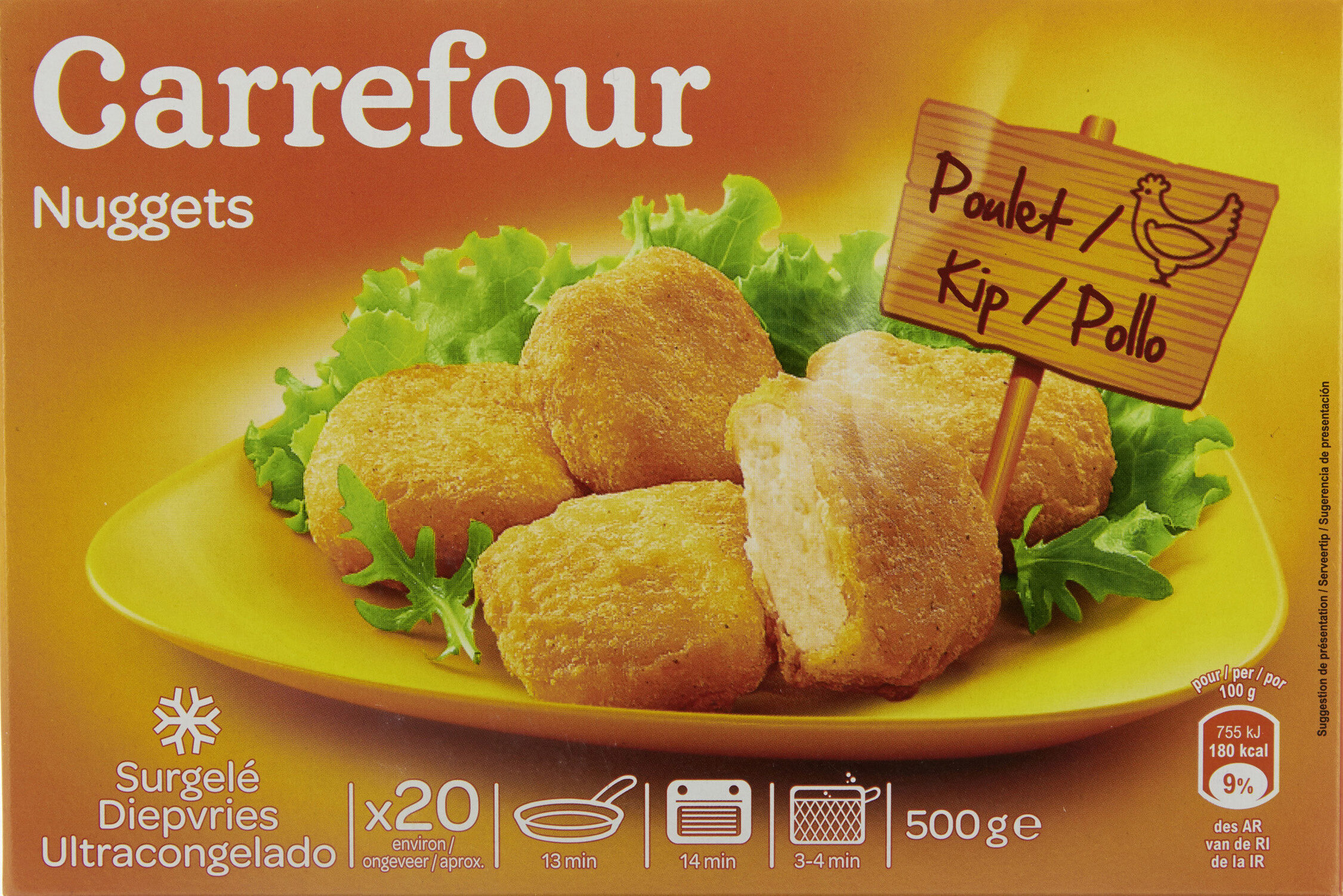Nuggets de poulet - Carrefour - 500 g / x20 environ
This product page is not complete. You can help to complete it by editing it and adding more data from the photos we have, or by taking more photos using the app for Android or iPhone/iPad. Thank you!
×
Some of the data for this product has been provided directly by the manufacturer Carrefour.
Código de barras: 3560070600090 (EAN / EAN-13)
Common name: Préparation de filet de poulet traitée en salaison, reconstituée, enrobée, frite, cuite et surgelée.
Cantidade: 500 g / x20 environ
Empaquetado: en:Box, en:Cardboard, en:Frozen
Marcas: Carrefour
Categorías: en:Meats and their products, en:Meat preparations, en:Meats, en:Chicken and its products, en:Poultries, en:Chicken preparations, en:Breaded products, Galo, en:Poultry nuggets, en:Breaded chicken, en:Chicken nuggets
Etiquetas, certificacións, premios: en:Made in Germany
Origin of the product and/or its ingredients: Viande de poulet origine UE.
Orixe dos ingredientes: Unión Europea
Producer: Fabriqué en Allemagne et importé par MOY PARK SAS pour INTERDIS - TSA 91431 - 91343 MASSY Cedex - France
Traceability code: DE SN-EV 1600 EG
Tendas: Carrefour, carrefour.fr
Matching with your preferences
Medio ambiente
Carbon footprint
Empaquetado
Transportation
Other information
Other information: 500g e - surgelé - picto GDA Des nuggets de poulet Carrefour qui régaleront petits et grands. picto poêle 13 min picto four tradi 15 min x 20 environ
Preparation: Sans décongélation préalable Au four traditionnel : Préchauffer le four à 200°C. Réchauffer les nuggets pendant environ 15 minutes en les retournant à mi cuisson. A la friteuse :Mettre les nuggets 3-4 minutes dans une huile chauffée à 180°C. A la poêle :Réchauffer les nuggets 1 minutes à feu vif puis à feu moyen laisser réchauffer 6 minutes de chaque côté.
Conservation conditions: ATTENTION, NE PAS RECONGELER APRES DECONGELATION (en majuscule et en gras) A conserver 24 heures au réfrigérateur, 3 jours dans le compartiment à glace du réfrigérateur, plusieurs mois à -18°C dans un congélateur *** . A consommer de préférence avant fin : Voir sur le côté de l'emballage.
Customer service: F Service Consommateurs Carrefour - INTERDIS TSA 91431 - 91343 MASSY Cedex - France N° Cristal 09 69 39 7000 B Carrefour Product info PB 2000 EVERE 3 - 1140 Brussels Tél: 0800/9.10.11 E Centros Comerciales Carrefour S.A.C/ Campezo, 16 - 28022 MADRID - Espana Tel: 902 20 20 00
Report a problem
Data sources
Product added on by kiliweb
Last edit of product page on by kiliweb.
Páxina do produto tamén editada por aleene, beniben, carrefour, desan, driveoff, ecoscore-impact-estimator, off.cb5b31e4-fd2e-45e2-8e52-a60cd94dc4ef, openfoodfacts-contributors, org-carrefour, packbot, roboto-app, thaialagata, yuka.SFk0R0RwUWNqUHBhcHZRRTBDbjg2Lzh2eDREellHNlVDc2NXSWc9PQ, yuka.VzVBYVQ3d2hwOE1CbHNJTTNCSGIxZmQ1N0xXWloyR0dMN29TSWc9PQ, yuka.WVk0U01KVVRtdlJVd3Rzd3p5M1FxdHR2MTVTSWJFYThJTFZJSVE9PQ.








